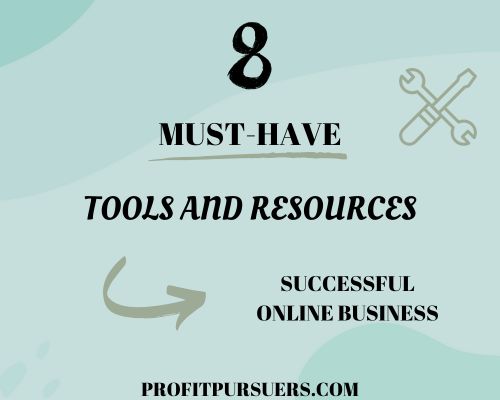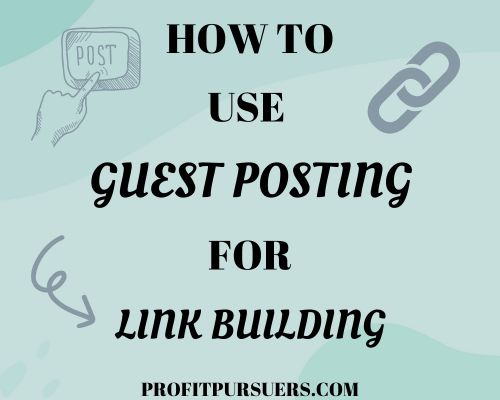The action you may have to take in order to run a successful online business, as always, depends on your specific niche.
However, running a successful online business pretty much comes down to two vital things: a solid business idea and the right resources.
Therefore, I think it it worth to dedicate a whole post to tools and resources for your online business.
Be ready to explore the 8 must-have tools and resources for running a successful online business.
Table of Contents
8 Must-Have Tools and Resources for Your Online Business
1) Why the Right Tools and Resources are Vital
2) 8 Must-Have Tools and Resources for Running a Successful Online Business
Why the Right Tools and Resources are Vital
Using the right tools and resources is extremely helpful to run a successful online business.
Let me tell you why:
1. Efficiency and Productivity
Just imagine that you have to write every single email yourself, when someone subscribes to your newsletter.
You would call this inefficient.
It would take up a lot of time that you could use for other more important things.
For example, with the right tools you can invest your time and energy on high-value activities such as product development, marketing and customer engagement.
2. Competitive Advantage
Some of your competitors may not have read this post and thus not have the same knowledge on tools and resources as you.
By leveraging the latest tools and technologies you can invest your time to get ahead of your competitors.
Design a better product, provide superior customer service,… the sky is the limit!
3. Scalability and Growth
You want to choose resources that can scale with your business growth. These technologies help you to handle higher demand, transactions and customer numbers.
Even if your online business is small yet, it is best to use the right resources right away.
Why?
Changing programs afterwards, can be a challenging task.
8 Must-Have Tools and Resources for Running a Successful Online Business
So what are the 10 must-have tools and resources for your online business? Here you go:
1. Website Building Platforms
This list starts from the very beginning.
What do you need first to build an online presence?
Most certainly an own website!
Having to create your own website can be an overwhelming task. But no worries!
Luckily so-called website building platforms were created by some smart people!
With website building platforms it is a breeze to create websites.
These programs enable you to piece together a website without having to know a single thing about coding.
They usually come with pre-designed templates and drag-and-drop editors, so you can customize your site to look just the way you want it.
Let us summarize why these programs are so great:
- No Coding Required
- Variety of Templates
- Customization Options
- User-Friendly
There are a few website building platforms out there. Here are my top 4:
- WordPress – great for everyone
- Shopify – for those planning to sell products, first month for only $1!
- Wix – beginner-friendly
- SquareSpace – modern designs and easy-to-use
To get your website visible for others, there are more steps necessary. Nothing too complicated, promised. Consider reading this post for more in-depth guidance!
2. Email Marketing Software
Later on, it becomes essential to build an email list in order to run your online business successfully.
Let me tell you why:
Email marketing has the highest return on investment (ROI) than any other marketing strategy. That’s at least according to a study by Dot Digital.
In more precise words, the study found out that email marketing has an average ROI of $39 for every dollar spent.
That is awesome!
You invest a bit of money and get 39 times more of it back!
Hopefully you see the huge potential proper email marketing carries.
To do so, there are useful and easy-to-use software tools you can use to get started.
To build your first email list, check out the following programs:
A few sentences ago, I mentioned “proper email marketing”
What do I mean by this?
Well, effective email marketing does not mean to spam your audience with senseless emails.
Do this instead:
1. Targeted Campaigns
2. Automated Email Sequences
Also, these programs enable you to send multiple emails automatically.
Let’s say you want to send out a welcome email after somebody subscribes to your newsletter and two days later an email promoting your latest product.
No problem with automated email sequences. Once created, everything is being send out to your subscribers automatically.
That’s extremely powerful and saves you a lot of time!
3. Content Creation Tools
For your online business to be successful, there is one vital step necessary: Creating high-quality content.
Creating content that helps, entertains or solves your audience’s problems should be your goal at any time.
To ensure this you, of course, have to make enough research for your content.
Speaking of content for your social media presences and graphical content, here are some useful resources:
- Canvas: Such a great tool to create logos, ebooks and social media content
- unDraw: Great to get royalty-free graphics
- PiktoChart: Easily create visually appealing infographics/ presentations/ posters
4. SEO Tools
Once your goal is to increase your website traffic, there is no way around proper SEO.
For those of you who don’t know: SEO stands for search engine optimization and refers to everything you can do to get ranked higher in SERPs (search engine result pages).
SEO can be subdivided into on- and off-page SEO.
On-Page SEO
Optimizations you can make on your website, including the use of right keywords, user-friendly design, internal linking and title tags.
Off-Page SEO
Optimization outside of your website such as backlink building or your social media
That being said, SEO can be made a ton easier with the right tools.
These programs are worth to be considered:
- RankMath – best for on-page SEO, excellent compatibility with WordPress
- Ahrefs – backlink analysis, keyword research
- SEMrush – keyword research
- Moz – backlink analysis, keyword research
As you see, the last three tools are offering you nearly the same. It is up to your preferences what tool works best for you.
I can definitely recommend you all three of these SEO tools.
5. E-Commerce Platforms and Payment Gateways
If you are planning to sell your own products or services to your audience, you have to provide secure payment options.
Good news: There are solutions for this task too.
Some of those are:
- Shopify – provides payment services too
- WooCommerce
- BigCommerce
The key is to provide payment methods your audience trusts and is familiar with. Otherwise people might avoid buying from you!
To do so, make sure to integrate modern payment gateways such as PayPal, Stripe or Square.
6. Analytics and Data Insights
After all of the work you put into your online business, we of course want to see some results.
Monitoring your growth and detecting things you can improve is crucial to run a successful online business.
Google Analytics is pretty much the go-to platform to collect these data.
Google Analytics, for example, let you track your website traffic, user behavior, and conversion metrics.
These are all valuable insights for you, as you can see what works well and what could be improved.
Based on these data you can optimize your online business strategy making it even more successful.
7. Social Media Management
Whether social media is your main business or you use it to complement your website, managing your accounts is essential.
Social media is so great because it is completely free to use and you have the chance to attract thousands of people to your business.
We call this FREE traffic.
To become successful with social media you need to things:
- Understanding Your Audience and their Preferences
- Consistency
This can be challenging, especially when you have multiple accounts on various platforms.
But as you can imagine, there are tools for this (as for anything else too):
All of these programs are great for scheduling posts, monitoring engagement, and analyzing performance across multiple social media platforms.
Have a look at each of them and decide based on your preferences.
8. Project Management Software
Once you are expanding and begin hiring people, managing everyone’s tasks is getting more complicated.
That’s where so-called project management softwares enter the game.
These programs help teams organize, track, and collaborate on projects efficiently.
Also, it provides a platform where tasks, deadlines, and resources can be managed in real-time.
Why is this so great?
Well, it enhances the efficiency and productivity. It is as simple as that.
Finishing tasks quicker will save you money in the long-term, making these programs worth their price.
Popular management softwares are:
The Takeaway
At the end of each of my posts I provide a short takeaway. Just to make sure you remember the things you learned today! 🙂
Using the right tools and resources has several benefits, including efficiency, competitive advantages and a better scalability.
Email marketing softwares and social media management tools are great to do proper digital marketing.
With email campaigns you can promote your products/ services/ posts and social media tools enable you to understand your audience’s preferences significantly better.
Website building platforms enables you to create your own website with themes and customization options.
Managing your business can be challenging as you grow.
For this purpose, you can use project management softwares and analytics.
Content is key for online business success.
Make sure to post SEO friendly content consistently.
Content creation and SEO tools help you with this task.
If you plan on selling products on your website, you need the right e-commerce platforms and payment gateways.
There are all-in-one solutions such as Shopify and WooCommerce.
Final Thoughts
Now that you know about the 8 must-have tools and resources for running a successful, there is literally no excuse preventing you from starting.
Make sure to use some of the tools I mentioned in this post and aim for success!
Do you have any questions? Let me know in the comments section down below!









